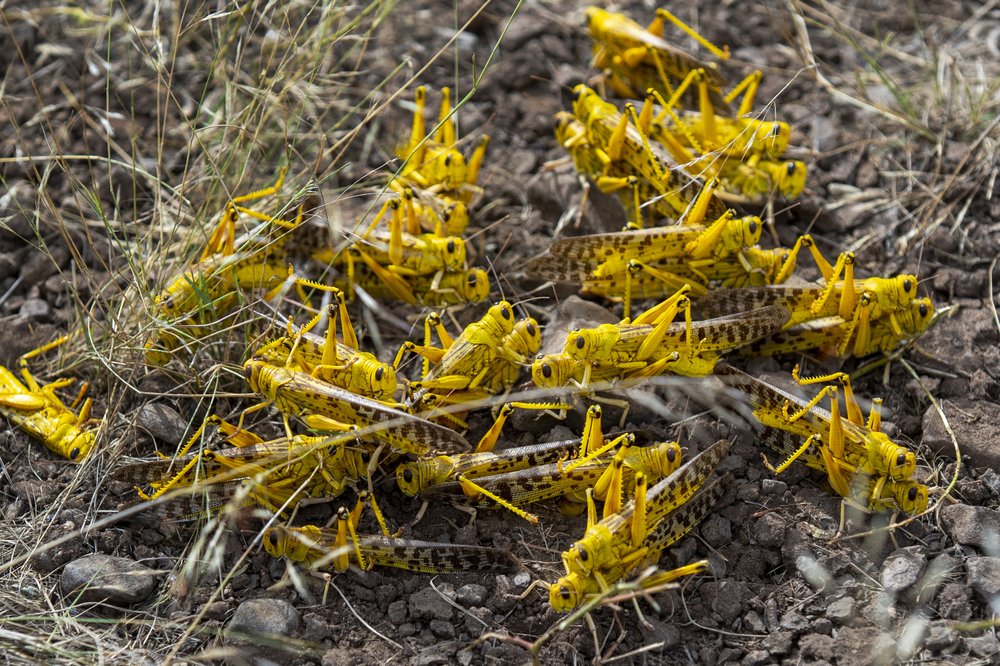
Panic as desert locusts invade Uganda

Swarms of deadly desert locusts Sunday entered Uganda through Amudat District, Karamoja region, creating panic among the farmers, pastoralists and leaders in the region.
In response, government officials are in a crisis meeting to prepare how to prevent the locusts that have ravaged several parts of Kenya, from spreading to other parts of Uganda.
“I have called an emergency meeting of relevant political leaders& technical officers @OPMUganda at 7pm tonight to immediately swing into action with the preparedness interventions we have been planning to deal with #DesertLocusts,” Prime Minister, Dr Ruhakana Rugunda said in a Sunday tweet.
Mr Martin Owor, the Commissioner Disaster Management Office of the Prime Minister, had earlier said that the Amudat District agricultural officer had reported that the locusts were about 4 kilometres away from the Kenya-Uganda border.
Latest reports show that the deadly insects were spotted in several parts of Amudat District at about 2pm on Sunday.
Reports say that the locusts entered Uganda via North West Pokot in Kenya, where they have destroyed hundreds of acres of vegetation.
According to Robert Adyama, the Amudat District Resident District Commissioner,the locusts have started destroying vegetation.
He said the locusts are still in Okorikeya and Loro villages.
Desert locusts, according to United Nations Food and Agriculture Organizations (FAO) have destroyed vegetation in Kenya as they move toward Uganda.
They travel in dense, crackling swarms which can contain as many as 80 million locusts per square kilometre.
FAO says the locusts can live for up to five months, depending on weather and local conditions. They can lay eggs that can hatch after two weeks, with locusts maturing to adulthood in two to four months on average.
They can destroy about 192 million kilogrammes of vegetation in two days.






